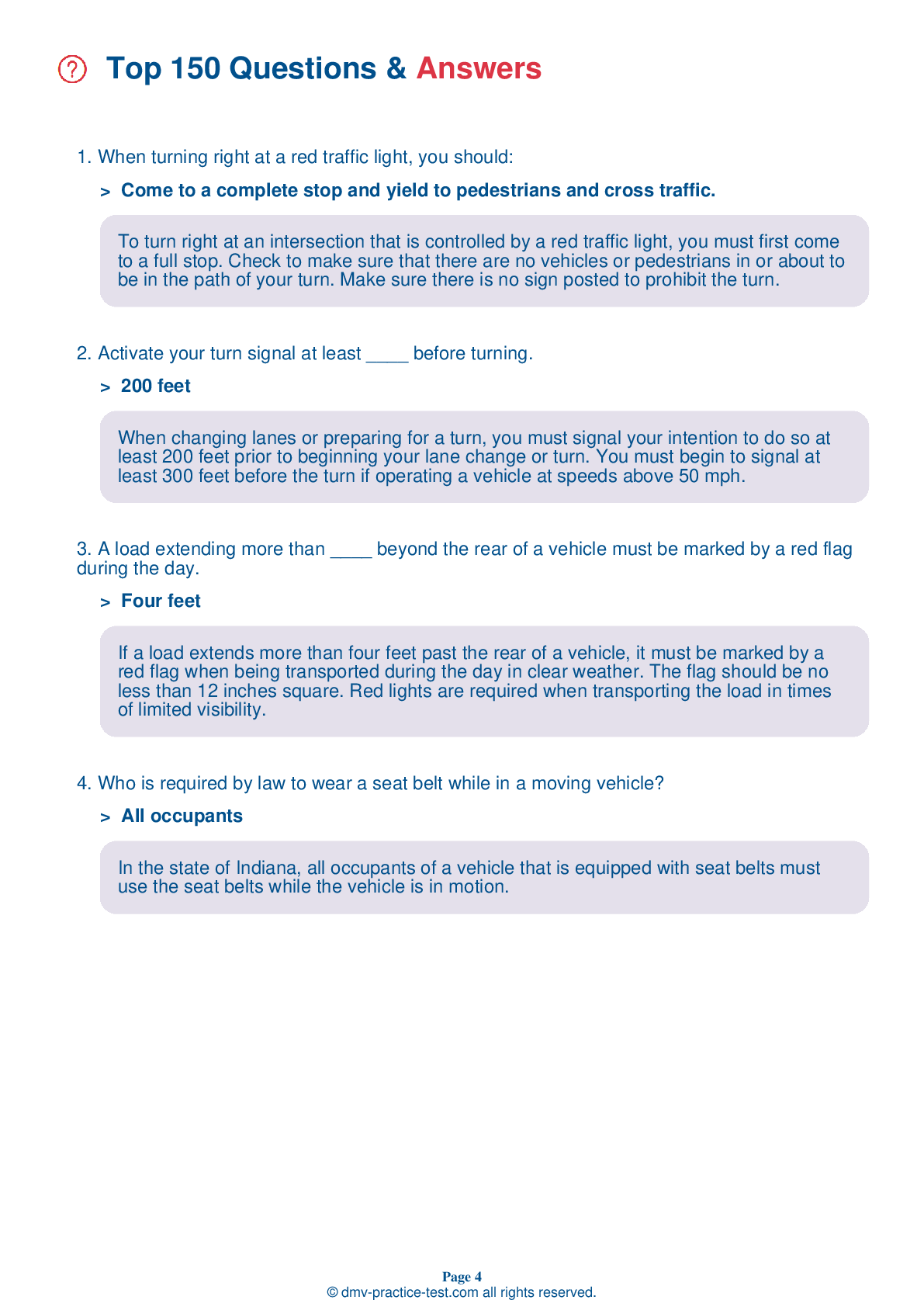FREE Indiana DMV Practice Test #14 Page 3 of 5
This set of Indiana DMV practise tests has been updated for January 2026. It includes questions based on the Indiana Driver Handbook's most significant traffic signals and laws for 2026. Use actual questions that are very similar (often identical!) to the DMV driving permit test and driver's licence exam to study for the DMV driving permit test and driver's licence exam.
On the practise exam, each question gets a tip and explanation to help you remember the concepts. The written component of the official Indiana DMV test will include questions about traffic rules, traffic signs, and driving statutes, as well as information from the Driver Handbook.
To obtain a passing grade, you must correctly answer 44 of the 50 questions. Take our DMV practise exam to help you prepare for your Indiana instruction permit or driver's licence.
The DMV exam is available in several languages.
Using any kind of testing assistance will result in an automatic fail, and the DMV may take additional action against your driver's licence, so stay away from it.
17 . When parking uphill on a hill or incline with a curb:
To keep your vehicle from rolling into traffic when parked facing uphill, turn your front wheels sharply away from the curb. If you are parking uphill on a street that has no curb, turn the wheels sharply toward the edge of the road.
18 . When merging onto a freeway, it is usually best to:
When entering a freeway, use the on-ramp to accelerate to the speed of freeway traffic so you can blend in smoothly and safely. Entering traffic must yield to traffic already on the freeway.
19 . This green arrow on a lane use control signal means:

A steady downward green arrow over a traffic lane means you may use the lane indicated.
20 . This road sign means:

This sign warns that deer cross the roadway in the area. You should slow down, be alert, and be ready to stop.
21 . This sign means that:

This sign indicates that workers may be on or very close to the roadway ahead, so you should take special care when traveling through the area.
22 . If two drivers arrive at the same time to an open intersection:
If you arrive to an open intersection at the same time as a vehicle to your right, you should yield the right-of-way to that vehicle. You may then proceed when it is safe to do so.
23 . Your brake lights tell other drivers that you:
Your vehicle's brake lights indicate to other drivers that you are slowing down or stopping. Your brake lights should always be in working order when you are driving on any roadway.
24 . What do speed limit signs indicate?
Speed limit signs indicate the maximum or minimum safe speed that is allowed to be driven on a roadway. The maximum limits are for ideal conditions and you must reduce your speed when conditions require it.
25 . You may cross double solid yellow lines:
Double solid lines indicate that you may not pass or change lanes. You cannot cross the lines unless it is to turn left to enter or exit a highway, to turn into or from a driveway, or to make a U-turn (where permitted).
26 . What may help drivers conserve gasoline?
Every time you have to stop quickly, it takes time and fuel to accelerate and get your vehicle back up to the speed of traffic. Drivers who look far ahead of their vehicles can slow down gradually or change lanes to avoid unnecessary braking, leading to better gas mileage.
27 . To turn left from multilane, one-way streets and highways, you should start from:
To turn left from multilane streets and highways, start from the left lane.
See the exact questions that will be on the 2026 Indiana DMV exam.
99.2% of people who use the cheat sheet pass the FIRST TIME
LT gives us an insight on how the cheat sheet provided her with all the study questions she needed before taking her test.
Joe initially studied with the handbook and failed his test, he eventually found us online, studied and pass his test the first time around.



